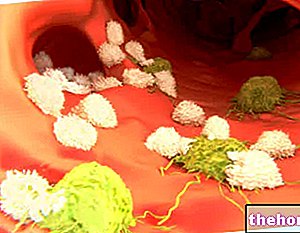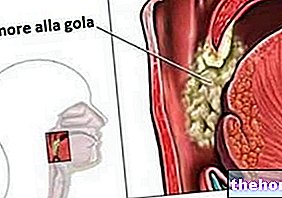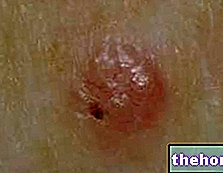The relationship between hormone replacement therapies in menopause and the risk of developing some forms of cancer has been a rather debated topic for decades. Let's try to shed some light on the subject.
First, let's define the concept of "hormone replacement therapy in menopause":
- administration of hormones (estrogens and / or progestogens and sometimes androgens) in order to fill the deficit resulting from the natural suspension of the ovarian endocrine activity which coincides with the entry into menopause;
Restoring the hormonal balance present before menopause can alleviate the symptoms of menopause itself (eg hot flashes, sweating, vaginal dryness, anxiety, irritability), and - if continued for a long enough time - protect the woman from the increased risk osteoporotic.
Based on the bibliographic information collected, derived from the most accredited scientific literature, we can start from some fixed points:
- Combined hormone replacement therapy (joint administration of estrogen and progestogen), taken after menopause to relieve symptoms, increases the risk of developing breast cancer and can hide the diagnosis. The risk is proportional to the duration of the treatment.
- Estrogen-only hormone replacement therapy, taken after menopause to relieve symptoms, does NOT significantly increase the risk of developing breast cancer. However, it significantly elevates the risk of endometrial hyperplasia, which could be a precursor of uterine endometrial cancer. Consequently:
- in women who have previously undergone hysterectomy (surgical removal of the uterus), hormone replacement therapy is generally carried out with estrogen alone; in this specific circumstance HRT seems to even have a protective effect against breast cancer;
- although in women with an intact uterus hormone replacement therapy with estrogen alone does NOT significantly increase the incidence of breast cancer, it is generally preferred to associate a progestin (natural or synthetic) to prevent the onset of endometrial cancer; unfortunately, this combination increases the risk of breast cancer.
- After many years of using hormone replacement therapy, the risk of ovarian cancer could increase; however, this is a fairly remote event, not confirmed by all epidemiological studies.
- The estrogen-progestogen association seems to have a protective role in the development of colon cancer, while the effect would not seem to exist when estrogen alone is administered
Having said that, it is appropriate to quantify the word "risk", which is too generic to provide the patient with a "precise idea of the relationship between the dangers and benefits of hormone replacement therapy in menopause. The discussion, at this point, becomes more complicated: if the points listed above are confirmed by most epidemiological studies, the quantification of risk varies from study to study, also in relation to the type of hormones, the doses taken and the duration of hormone replacement therapy. indicative title we report some data:
BREAST CANCER
- Among women who do not use HRT, 32 in 1000 women are expected to be diagnosed with breast cancer between the ages of 50 and 65, corresponding to an absolute risk of 3.2%.
- Among women who start estrogen-only HRT at age 50 and take it for 5 years, breast cancers diagnosed during this period (age 50-65) will be 33.5 per 1,000 women:
- 1.5 additional cases, equal to:
- a 4.7% increased risk compared to women who do not use HRT (risk factors being equal)
- an incidence increased by 0.15% in absolute terms
- 1.5 additional cases, equal to:
- If the intake is continued for 10 years, the breast cancers diagnosed become 37 per 1,000 women:
- 5 additional cases, equal to:
- a 15.6% increased risk compared to women who do not use HRT (risk factors being equal)
- an incidence increased by 0.5% in absolute terms
- 5 additional cases, equal to:
- Among women who start combined estrogen-progestagen HRT at the age of 50 and take it for 5 years, there will be 38 breast cancers diagnosed during this period (50-65 years) per 1,000 women:
- 6 additional cases, equal to
- an 18% increased risk compared to women who do not use HRT (risk factors being equal)
- an incidence increased by 0.6% in absolute terms
- 6 additional cases, equal to
- If the intake is continued for 10 years, the diagnosed breast cancers become 51 per 1,000 women
- 19 additional cases, equal to:
- a 60% increased risk compared to women who do not use HRT (risk factors being equal)
- an incidence increased by 1.9% in absolute terms
- 19 additional cases, equal to:
- In other words, if 10,000 women take combined HRT for a year, there are about 8 more cases of breast cancer a year than would have been if the women hadn't started the therapy. cancer association points out that women with thin or dense breasts who are taking HRT may be at particular risk of developing breast cancer.
- For all HRT, the additional risk of breast cancer becomes evident within months of starting therapy, increases with duration of use, but appears to return to the risk of the general population within 3-5 years after discontinuation.
ENDOMETRIUM CANCER
- The reported risk of endometrial cancer in users - WITH INTACT UTERUS - of estrogen-only HRT is approximately 2 to 12 times higher than in non-users, and appears to depend on the duration of treatment and the dose of estrogen. The increased risk appears to be associated with prolonged use, with a risk increased 15 to 24 times for 5-10 years or more, and this risk appears to persist for at least 8-15 years after discontinuation of estrogen-only therapy.
Adding a progestogen to estrogen HRT substantially reduces the risk of endometrial cancer.
We can conclude by reporting further firm points, according to which:
- For the treatment of postmenopausal symptoms, HRT should only be initiated for symptoms that adversely affect quality of life.
- Hormone replacement therapy in menopause is contraindicated in the current, past or suspected presence of:
- a malignant breast tumor
- another malignant tumor whose growth is sensitive to estrogen, for example in the endometrium (lining of the uterus) or ovaries;
- The risks and benefits of hormone replacement therapy must always be carefully weighed, also taking into account the occurrence of risks as therapy proceeds. Estrogens with or without progestogens should be prescribed at the lowest effective dose and for the shortest possible time. consistent with the purposes of treatment and the individual risks HRT should only be continued as long as the benefits outweigh the risks.
- Before starting therapy, the attending physician should carry out a thorough medical history of the patient (collection of information on personal and family medical history). The doctor should also subject the patient to a breast and / or pelvic (lower abdomen) checkup. and a gynecological examination.
Once the therapy has started, periodic medical checks will still be carried out (at least every year) for an accurate assessment of the risks and benefits in relation to the continuation of the therapy.- Undergo mammography screening and vaginal cytology examination (PAP test) at regular intervals.
- Regularly check for any changes in the breasts such as small depressions in the skin, changes in the nipple, or any hardening that is visible or noticeable.
In conclusion, if conducted in compliance with the above-mentioned rules, under the supervision of a trained physician, hormone replacement therapy is associated with an increased risk of some neoplasms, such as breast cancer; however this risk appears to be quite low. For example, as regards breast cancer, this risk is similar or even lower than that related to other factors, such as familiarity with the disease, late menopause and early menarche, nulliparity, late pregnancy (> 35 years ), obesity and overweight.




























